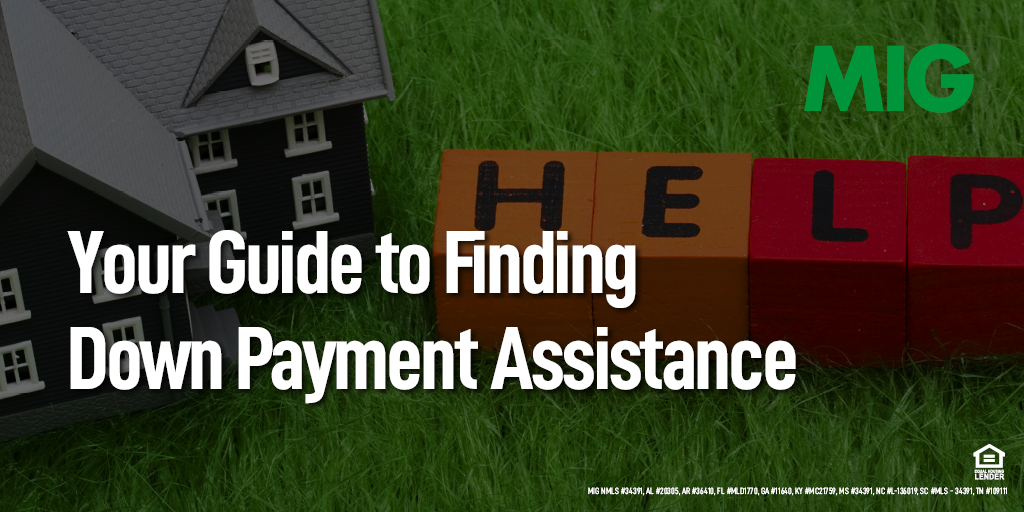
Buying a home can be expensive, and saving up a big enough down payment can seem almost impossible. Current rent, utilities, car payments, and other bills can make it difficult to have any money left over to save for a house.
The good news? If you qualify, you can take advantage of some helpful homebuyer’s down payment assistance programs that alleviate the burden of ponying up a large down payment. Sometimes these assistance programs are the difference in being able to get into a home. Here’s what you need to know about these programs, from what it takes to qualify to what they offer you.

VA Loans
What it is
The U.S. Department of Veteran Affairs backs mortgage loans in case of default. This loan program was created to encourage homeownership for active military and veterans. Among the many attractive benefits is the ability to get a mortgage loan with no down payment, unlike a conventional loan that requires 20% down. It also offers limited closing costs, good interest rates, and the borrowers don’t have to pay for expensive private mortgage insurance (PMI), either.
How to qualify
You or your spouse must be active duty military or a veteran who served at least 181 days during peace time or 90 consecutive days during wartime. Reservists and National Guard members are eligible after six years of service. Spouses of service members who died or were disabled during active duty can also qualify. These benefits do extend to same-sex spouses. This loan isn’t a one-time deal, either. You can take advantage of this program as many times as you want.
USDA Loans
What it is
The United States Department of Agriculture backs this loan to encourage homeownership in rural parts of the country. This program is also referred to as a rural development loan and, like the VA loan, offers several rare advantages to the homebuyers who qualify. It provides 100% financing, meaning the buyer doesn’t need to come up with a down payment. They also typically provide lower-than-average interest rates, so borrowers can end up with a more budget-friendly monthly mortgage payment. In addition, a buyer using this program may not have to pay closing costs. USDA usually finances properties that are 2,000 square feet or less and with the market value falling below the area loan limit.
How to qualify
USDA loans are only available in rural areas of the country, so you would need to buy in a ZIP code that is eligible. Luckily for homebuyers with less-then-excellent credit scores, USDA loans will accept and approve loans for lower credit than traditional mortgages. Scores of 640 and above will move through the process with no issues, but borrowers with scores under that may still be able to qualify. Buyers with past foreclosures or bankruptcies may also be able to secure a USDA loan. Requirements include a stable work history for the past 24 months and no recent collections (in the last 12 months). The total monthly payment, including principal, interest, taxes, and insurance, cannot add up to more than 29% of the borrower’s monthly income.

THDA Loans
What it is
The Tennessee Housing Development Agency provides loans for Tennessee homebuyers. Its purpose is to stimulate home building and encourage affordable homeownership. It offers a program to hopeful borrowers that doesn’t require a down payment. The loan spans 30 years and typically offers a fixed interest rate for the life of the loan. The program helps buyers who would likely otherwise not be able to secure a mortgage with any other program.
How to qualify
THDA single family loans are usually extended to first-time homebuyers with very low, low, or moderate income. Borrowers who want to qualify for a THDA loan need to offer a stable credit history with a 640 minimum credit score. They also need to fall under the maximum income limits, which are designated on a county-by-county basis, and be buying a home that falls under the maximum price limits, which are also determined by county. The property must be the borrower’s main residence throughout the life of the loan. Keep in mind that you may be required to participate in homebuyer education courses to qualify for this program.
It can be hard to figure out how to save a down payment and pay for closing costs when you’re thinking about buying a house. These obstacles do not have to deter you from becoming a new homeowner. Research all the options available for down payment assistance, because you can most likely find one that works for you.



